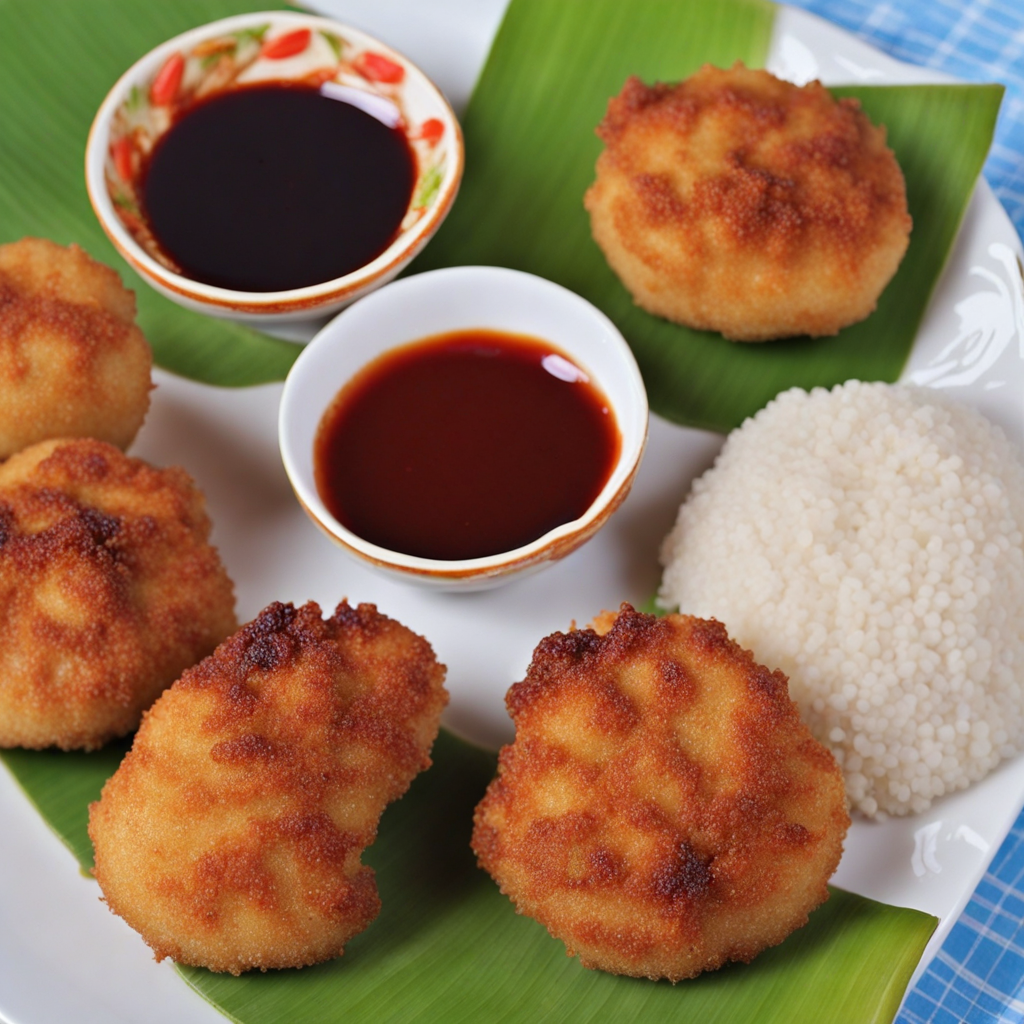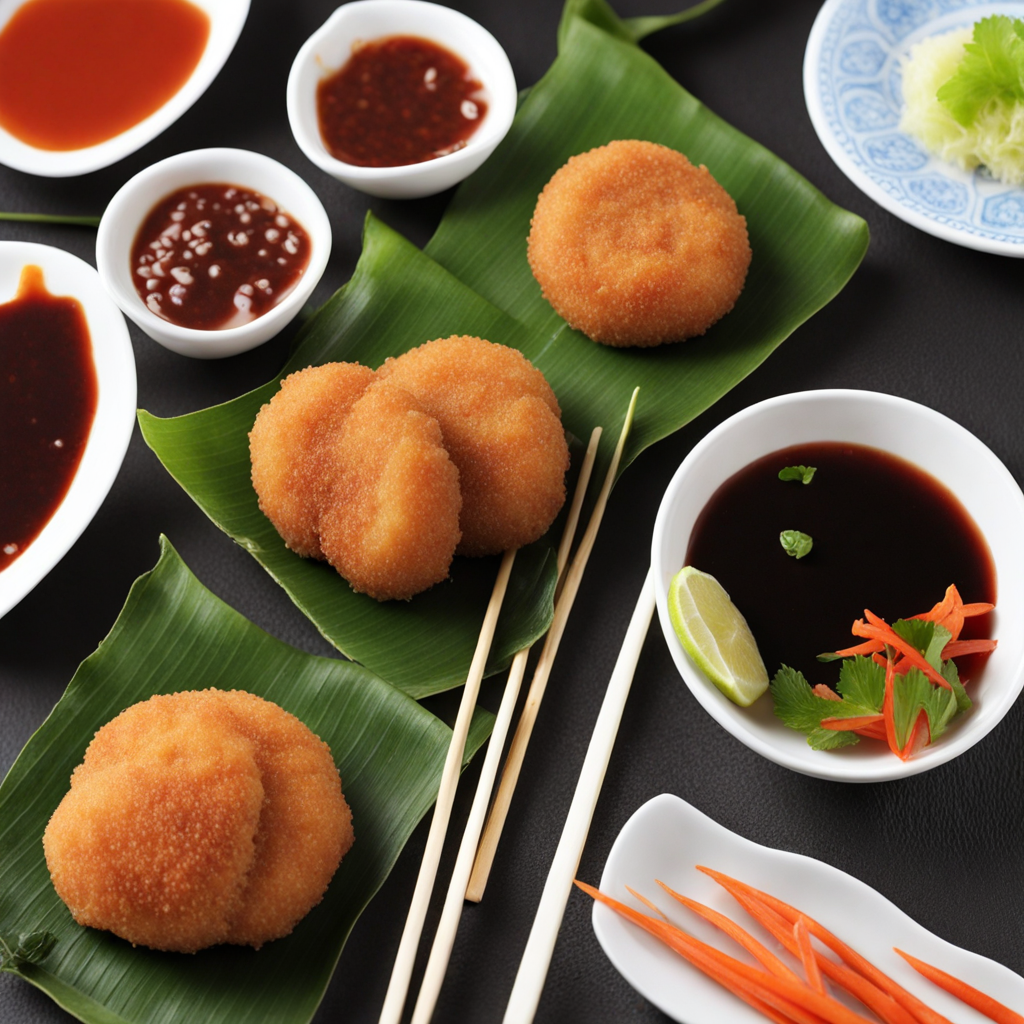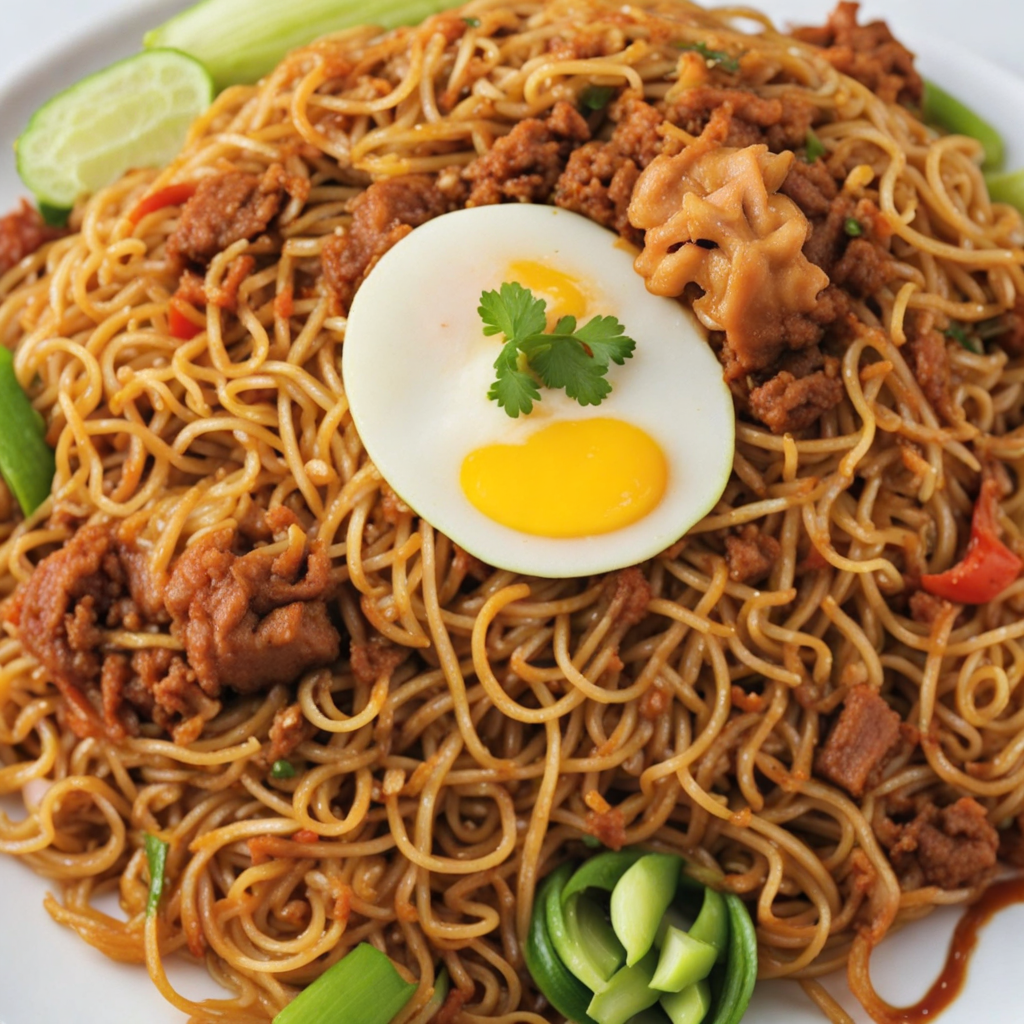Pempek
Pempek is a traditional Indonesian dish originating from Palembang, the capital of South Sumatra. This beloved delicacy has a rich history that dates back to the early 16th century. It is said to have been created by the Chinese immigrants who settled in this region, adapting their culinary techniques to local ingredients. The name "Pempek" itself is derived from the Hokkien word "pian pe," which means fish cake. Over the centuries, Pempek has evolved into a staple Indonesian food, cherished by locals and tourists alike. At its core, Pempek is a fish cake made primarily from ground fish and tapioca starch. The most commonly used fish is mackerel, known for its firm texture and distinct flavor, although other types of fish can also be utilized. The fish is finely minced and mixed with sago flour or tapioca starch, which gives the dish its signature chewy texture. The mixture is then shaped into various forms, such as round balls, flat patties, or even elongated sticks, and boiled or steamed until cooked through. Each shape has its own name, with “Pempek kapal selam” being one of the most famous varieties, featuring a boiled egg enclosed within the fish cake. The flavor profile of Pempek is a delightful blend of savory and slightly fishy notes, complemented by a unique tangy sauce known as "cuko." This sauce is made from tamarind, brown sugar, chili, and garlic, providing a perfect balance of
How It Became This Dish
Origin of Pempek Pempek, a beloved traditional dish from Indonesia, hails primarily from the coastal city of Palembang in South Sumatra. The dish is a type of fish cake made from a mixture of fish and tapioca flour, which is then molded into various shapes and sizes. The origins of pempek can be traced back to the 16th century, when the Chinese immigrants brought their culinary techniques to the Indonesian archipelago. The locals adapted these techniques, leading to the creation of pempek, which became a staple food in Palembang. The primary fish used in pempek is usually ikan tenggiri (mackerel), known for its firm texture and distinct flavor. Its preparation involves finely grinding the fish, mixing it with tapioca flour, and seasoning it with salt, garlic, and sometimes pepper. This mixture is then shaped and boiled or fried, resulting in a deliciously chewy texture that is unique to pempek. Cultural Significance Pempek is more than just a dish; it is a cultural icon of Palembang. The food reflects the region's rich history and diverse influences, symbolizing the fusion of indigenous ingredients with foreign culinary practices. Pempek is often served with a sweet and tangy sauce made from vinegar, sugar, and ground chilies, known as cuko, which complements the savory flavors of the fish cake. In Palembang, pempek is commonly enjoyed during family gatherings, celebrations, and festivals. It serves as a dish that brings people together, reinforcing community bonds and shared cultural identity. The preparation of pempek is often a communal activity, with family members participating in the mixing, shaping, and cooking processes, passing down recipes and techniques from generation to generation. Varieties of Pempek Over the centuries, pempek has evolved into a variety of forms and flavors, each with its own unique characteristics. The most common types include pempek kapal selam (submarine pempek), which is stuffed with a whole boiled egg; pempek lenjer, a cylindrical version; and pempek adaan, which is fried and has a crispier texture. Each variety caters to different tastes and preferences, showcasing the adaptability of this iconic dish. Apart from its traditional forms, modern interpretations of pempek have emerged, often incorporating innovative ingredients or fusion styles. Some chefs experiment with different types of fish or even vegetarian options, appealing to contemporary dietary preferences. These adaptations not only keep the dish relevant but also attract a broader audience, ensuring its continued popularity. Pempek in Contemporary Indonesia In contemporary Indonesia, pempek has transcended its regional roots and gained national fame. It can be found in various cities across the archipelago, served in local eateries and upscale restaurants alike. Street vendors have also embraced pempek, offering it as a convenient and affordable snack for people on the go. The dish has become emblematic of Indonesian street food culture, appealing to both locals and tourists. The rise of social media has further contributed to the popularity of pempek, with food enthusiasts sharing their culinary experiences and showcasing the dish's appeal through vibrant photographs and engaging stories. This exposure has fueled a renewed interest in traditional foods, encouraging younger generations to explore their culinary heritage. Economic Impact The popularity of pempek has also led to significant economic opportunities within Palembang and beyond. Small businesses specializing in pempek production have emerged, providing livelihoods for many local families. Some entrepreneurs have taken their operations online, selling frozen pempek that can be shipped across the country. This expansion of the pempek market not only supports local economies but also promotes Palembang's cultural heritage on a larger scale. Local competitions and festivals celebrating pempek have also gained traction, further enhancing its status as a regional pride. Events such as the Pempek Festival in Palembang attract visitors and food lovers, showcasing various pempek preparations and offering tasting sessions. These activities not only promote culinary tourism but also strengthen the community's identity and pride in their culinary traditions. Challenges and Preservation Despite its popularity, pempek faces challenges in the modern culinary landscape. The rise of fast food and international cuisines has posed a threat to traditional dishes, leading to concerns about the preservation of culinary heritage. However, initiatives aimed at promoting traditional Indonesian cuisine have emerged, emphasizing the importance of maintaining cultural identity through food. Efforts to document traditional recipes and cooking techniques are underway, ensuring that future generations can continue to enjoy and appreciate pempek. Community workshops and cooking classes are being organized, allowing enthusiasts to learn the art of making pempek from experienced cooks. These initiatives help to create a sense of ownership and pride in local culinary traditions, fostering a deeper connection to cultural heritage. Pempek's Global Reach As the world becomes increasingly interconnected, pempek has also gained recognition on the international stage. Indonesian restaurants abroad have introduced pempek to a broader audience, celebrating its unique flavors and textures. Food festivals and cultural events featuring Indonesian cuisine often showcase pempek, allowing people from different backgrounds to experience this delightful dish. The globalization of food culture has led to a growing interest in traditional dishes like pempek, prompting chefs and culinary enthusiasts to explore the flavors of Indonesia. This international exposure not only highlights the richness of Indonesian cuisine but also encourages cultural exchange and understanding. In conclusion, pempek stands as a testament to Indonesia's rich culinary history, embodying the fusion of cultures and traditions that have shaped the archipelago's gastronomic landscape. Its significance in Palembang and its growing popularity across Indonesia and beyond reflect the enduring appeal of traditional foods in a rapidly changing world. As pempek continues to evolve and adapt, it remains a beloved dish that connects people to their heritage, fostering a sense of community and cultural pride.
You may like
Discover local flavors from Indonesia







